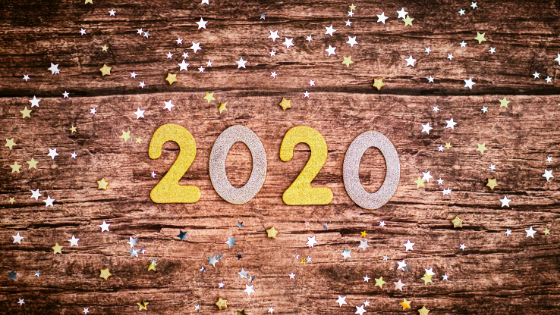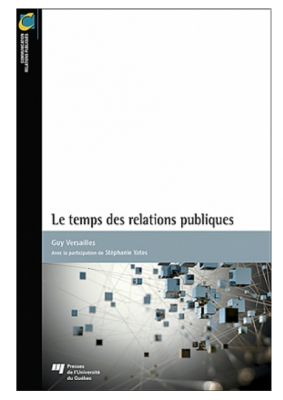2020: The Year of Public Relations

As we begin a new year and a new decade, I’m not looking to the future—or even the past.
I’m concerned about right now. That’s why I am declaring 2020 the International Year of Public Relations!
If all of us public relations professionals put our minds to it, we can make it happen.
Why?
OUR CONTRIBUTION TO ORGANIZATIONS AND SOCIETY IS AS CONCRETE AS IT IS SIGNIFICANT, BUT IS TOO OFTEN UNKNOWN, MISUNDERSTOOD, SELDOM ADOPTED, AND UNDERAPPRECIATED.
What can we do? Here are five suggestions.
1. Assert yourself!
Among the readers of this blog are specialists in marketing, advertising, research, design, management, social media, artificial intelligence, etc. Do you realize that it has been a long time since your predecessors prescribed clear (and short!) definitions for your professions?
Paradoxically, public relations professionals have worked so hard supporting organizations, executives, and brands over the past several decades that they’ve neglected their own positioning.
The time has come to make things right. To raise the profile of public relations so that the true value of this advisory role is recognized.
First of all, let’s set the record straight. We’re not PR people—we’re PR professionals!
We exert our influence in a variety of fields and are members of prominent organizations, including Société québécoise des professionnels en relations publiques (SQPRP), Alliance des cabinets de relations publiques du Québec (ACRPQ), the International Association of Business Communicators Montreal (IABC Montreal), PR Without Borders (PRWB), the Canadian Public Relations Society (CPRS), and the Canadian Council of Public Relations Firms (CCPRF).
We are strategists in the decision-making process.
We actively help put issues in plain language and enhance the image and reputation of our clients, companies, and brands, and you can count on our expertise in times of crisis!
We boast solid academic backgrounds and a range of experience in the analysis of complex issues and management, and we offer complementary expertise.
We are increasingly being recognized and certified with titles such as “Public Relations Professional” (PRP), “Certified Public Relations Professional” (CPR), and “Fellow in Public Relations” (FCPRS).
To drive home the above points, I suggest you get and read from cover to cover THE book that we have needed and that has just been published by our colleague Guy Versailles: Le temps des relations publiques.

This book is very much on point for learning and understanding what public relations are and are not—and making it clear what we are.
2. Look, listen, and anticipate
Society is changing every day. Have you noticed?
We are now firmly ensconced in an era of social acceptability. An era where managers, elected officials, developers of all kinds, and investors must realize—and accept with great humility—that their projects as imagined at point A are likely to change on the way to point Z due to public pressure.
More than ever, public relations professionals need to look carefully, really listen to stakeholders, and anticipate, as early as possible, the obstacles that will stand in the way of projects.
But beware: social acceptability does not mean social unanimity. It’s important to be open and show good faith while explaining different points of view respectfully.
3. Be people-friendly
The added value of public relations takes many forms, including the complementary contribution of PR professionals to different facets of management.
Could we replace lawyers? No. But we prove every day that how we say and write things (cutting through countless, nonessential legal details) is sometimes more appropriate for helping people understand.
Could we replace human resources specialists? No. But our complementary expertise is often quite useful, because we often provide a “political” read on organizations and issues that makes the difference.
Would we gain by being the only ones to interact on social media? No. But let’s remember one fact: marketing specialists address consumers, while PR professionals interact with citizens.
4. Measure
The days of “I think what the media says about us is good” and “Let’s use marketing data to evaluate public relations” are thankfully over.
TODAY, DATA IS USED TO MANAGE INTERNAL AND EXTERNAL COMMUNICATIONS.
However, we still need specific objectives before measuring and determining strategies and actions that can be measured. You can only improve what you measure!
For example, reputation gains and losses of brands, organizations, and personalities can be measured in traditional and social media. So can the changing perceptions of target audiences in the face of different issues, as well as the various aspects of a building project or the legalization of a type of product.
In the decision-making process, quantifying objectives and results shows that the contribution of public relations professionals has become indispensable.
5. Be bold
Are we threatened by the arrival of robots that will generate stories for journalists? It won’t happen any time soon, but could artificial intelligence help with crisis management, particularly by identifying crises before humans do? Will algorithms create content from scratch? When will fully robotic media content analysis become a reliable tool?
When it comes to artificial intelligence and public relations, many more questions are being raised these days than there are real answers. That said, important changes are taking place that we need to pay close attention to.
On that note, I wish you a fabulous 2020!
